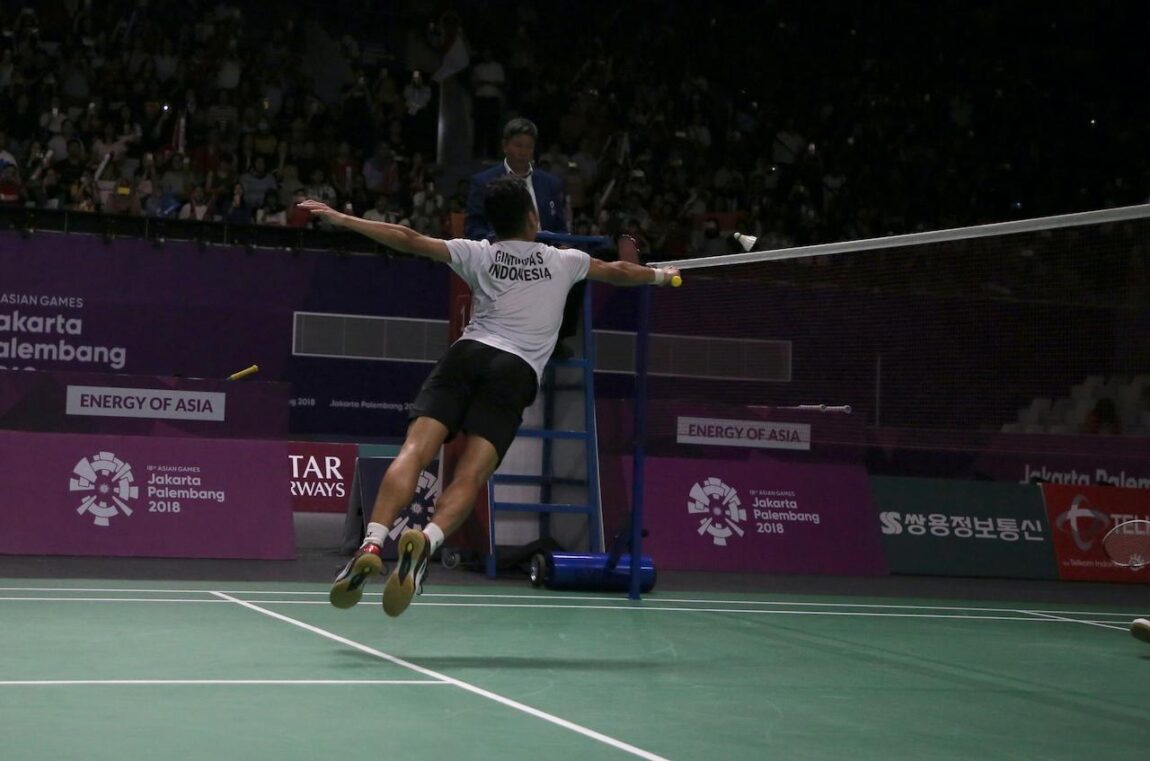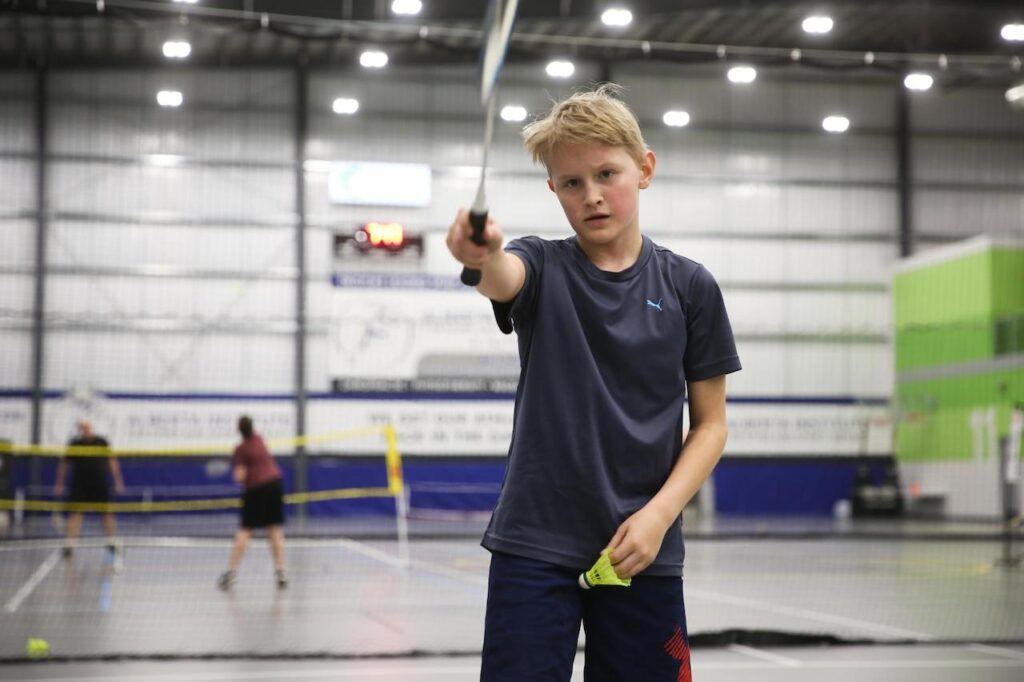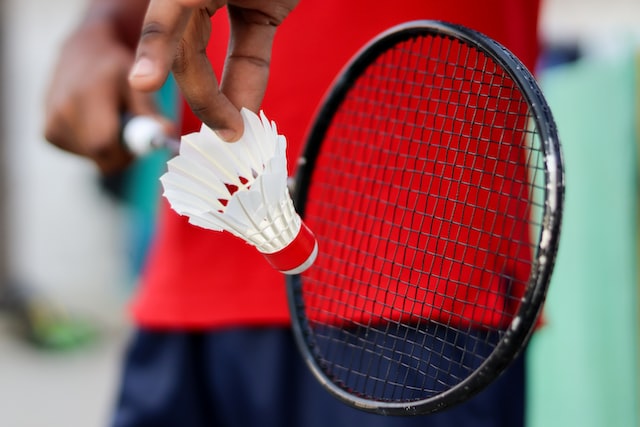It’s not just about flipping shuttlecocks in the great outdoors. During competitions, the projectiles can “accelerate” up to 400 km/h.
Almost everyone has played badminton at least once: at school, with friends at the country house or at a picnic. But not everyone knows that it is an official sport, and has been recognised as an Olympic sport since 1992. The sport of badminton is different from what many people are used to playing – it is complex, technical and requires a certain amount of coordination.
Benefits of Badminton

Although we all think of badminton as child’s play, it is actually a challenging sport that requires concentration and excellent sportsmanship. It is essential to have great coordination of your movements and the ability to react quickly. When playing badminton regularly, players not only train their body, but also their wits. Incidentally, the sport is included in the official training programme for astronauts. Below we will tell in more detail what its advantages are.
It Increases the Volume of the Lungs
Happens when you train every day. Increased lung volume reduces the risk of various respiratory system diseases, including asthma.
“Bad” Cholesterol – Reduced
Playing badminton raises levels of high-density lipoproteins, i.e. ‘good’ cholesterol. Regular exercise also lowers levels of bad cholesterol, which negatively affects blood vessels and even leads to heart disease.
This claim is also backed up by research from the British Heart Foundation. According to its results, regular exercise strengthens the heart muscle and minimises the risk of thrombosis, and also prevents the progression of coronary heart disease.
Helps Maintain Your Figure
Badminton is a fairly active game that involves many different muscle groups. It is easy to keep fit, control your weight and strengthen your muscular frame by playing it regularly. In addition, it can be safely recommended as a method for losing weight. It includes a whole range of exercises to train different muscle groups: bending, jumping, jogging and, most importantly, it is all easy and relaxed.
The Faculty of Public Health and Clinical Medicine at Umeå University in Sweden has carried out another study on the benefits and effects of playing badminton. Badminton was found to increase bone mass during adolescence. That is, it reduces the potential loss of bone mass and prevents the development of related diseases. In addition, regular play has positive effects on joints, their strength and mobility.
Lower Risk of Developing Dementia and Depression
A 2011 report by British scientists suggests that daily exercise markedly reduces the risks of depression and dementia. Regular exercise, particularly playing badminton, can reduce these risks by 20-30%. In this way, the sport has a positive effect on a person’s mental health.
In addition, while playing badminton you can discharge excess energy or discharge negative emotions. And the paired nature of the game increases the player’s socialisation and reduces the number of lonely people.
Reduces the Risk of Diabetes
According to a study carried out in Sweden in 2005, active people are 30-50% less likely to develop type 2 diabetes.
Helps to Train and Even Improve Vision
Playing badminton gives you an opportunity to exercise your eye muscles. The game requires you to keep your eye on the shuttlecock, which forces you not only to constantly look in different directions, but also to focus.
This kind of game is especially useful for children with possible hereditary myopia or hyperopia. By playing badminton they have the opportunity to absolutely beat a predisposition for decreased vision. The dynamic movement of the shuttlecock around the court perfectly trains the eye muscles and the entire visual system.
Increases Life Expectancy
Several organisations confirm that playing badminton in moderation can prolong life. And a recent international study published in the British Journal of Sports Medicine found: those who play racquetball tend to live longer than runners.
How Do You Start Playing Badminton?
Fall in love with badminton (and there is a lot to love about it!), then do a little preparation:
- Buy a basic player’s kit – a badminton racket (optimally a standard 67-68cm long) and a shuttlecock (several sets are better).
- Next it’s a question of sportswear – it should be comfortable, not restricting movement. Choose shoes with non-slip soles, you can take special shoes for badminton.
- Book an area to play – surely there are comfortable courts with professional surface, where you can enjoy a game at any time of the year.
- Find a partner. Badminton is a sport for two; you can play it with a friend, colleague or acquaintance who shares your passion for shuttlecock. If you’re a beginner, opt for a coach as a partner – he’ll guide you through the process and teach you the basics.
- Prepare for the exertion. Good general fitness and endurance are key to feeling good during a long game, so don’t neglect jogging and jumping rope. Don’t forget about warming up.










More Stories
The History of Badminton: A Comprehensive Overview
What is the Most Common Badminton Injury
Badminton and Sports Betting: How and Where to Bet?